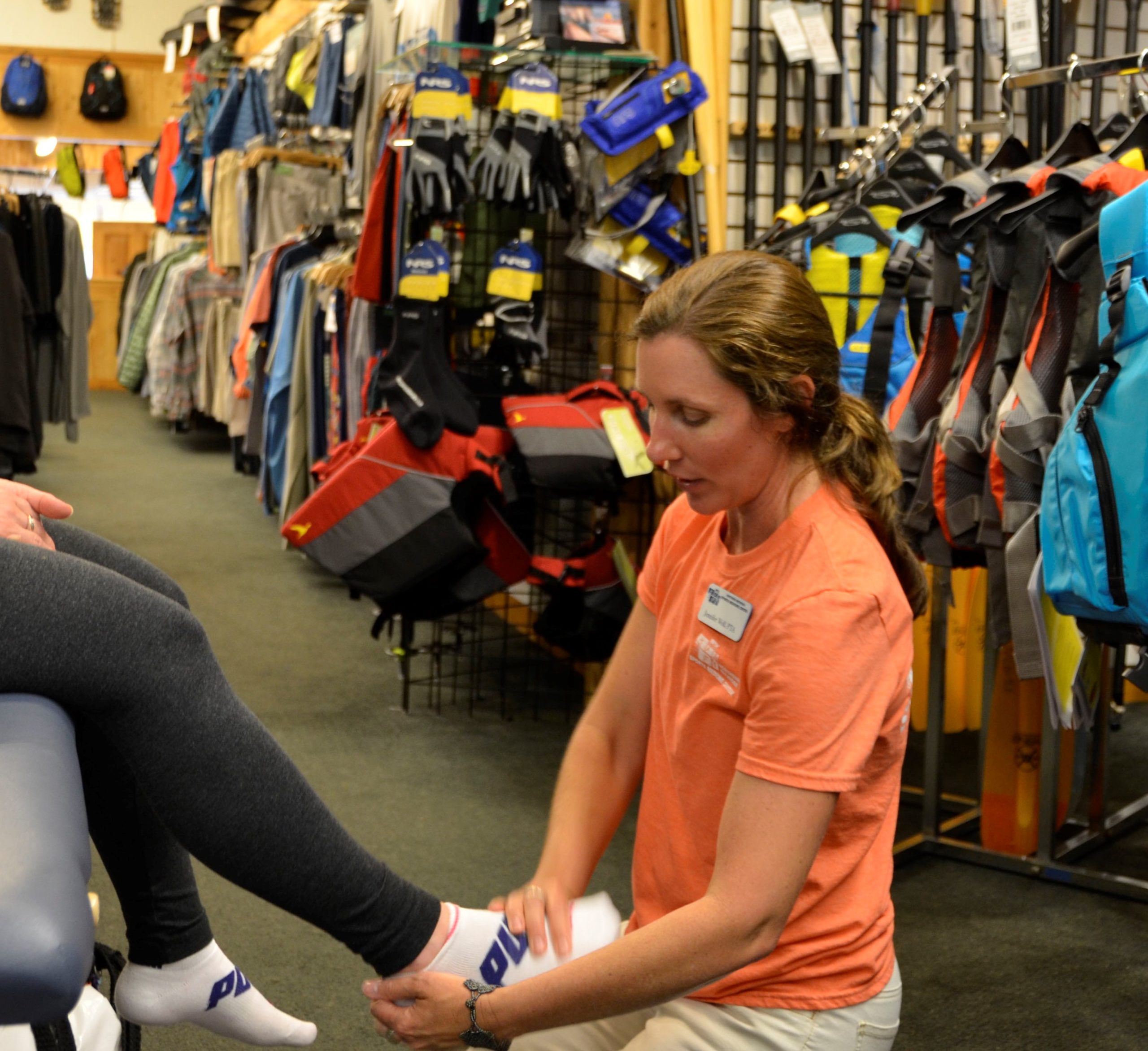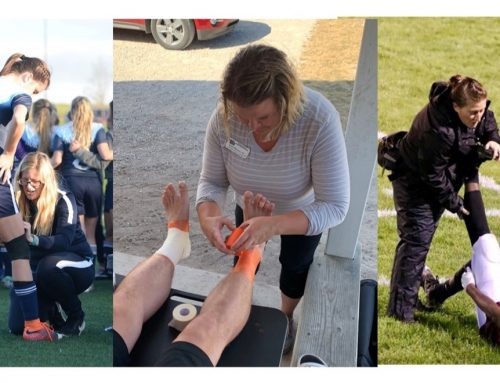One of the more common types of injuries we rehabilitate as physical therapists are ankle fractures.
We see these as a result of a wide range of mechanisms, from slip and falls on ice to rolling ankles while playing sports.
To learn more about how ankle fractures are managed surgically, we sat down with Dr. Scott Nemec. Dr. Nemec is an orthopedic surgeon who specializes in foot/ankle reconstruction at Bay Street Orthopaedics & Spine in Petoskey.
When we hear about our friends or family members suffering from ankle fractures, what are the more common types of fractures they sustain?
Nemec: “The base of the fibula (the lateral malleolus) forms the bony lump on the outside of your ankle. It can get broken if you twist your ankle forcefully or land on it badly with an injury. It is the most common type of ankle fracture. Along with the lateral malleolus, sometimes people will also break the medial malleolus which is on the inside part of the ankle or even the posterior malleolus which is on the back side of the ankle joint. Generally speaking, the more parts that are involved, the more severe the injury.”
How do these fractures typically occur?
Nemec: “These fractures are very common in sports, especially those that involve running, jumping, quick changes of direction or high-impact contact — such as football, basketball or rugby. The fibula attaches to the outside of the ankle with three strong, fibrous ligaments. When you roll over on your ankle or twist it forcefully, the ligaments get stretched and pull on the bone. The stress can cause a fracture in the fibula or even tear a chunk of the bone away (avulsion fracture).”
As a board-certified orthopedic surgeon who is fellowship trained in complex foot and ankle trauma and reconstruction including ankle and joint replacement, how do you address these types of fractures?
Nemec: “As a subspecialty fellowship trained orthopedic surgeon, I understand the importance of perfect reduction and fixation of ankle fractures. There are some fractures that do not require surgical treatment and can be managed with immobilization in a cast boot or cast along with careful observation.
“Fractures that are mal-aligned or unstable need to be managed correctly or long-term problems may result. Fractures need to be put back together properly and stabilized with hardware until it is healed.
“If these fractures are not precisely realigned during surgery, long term problems such as re-fracture, non-union healing (the bones don’t grow back together), and long-term functional deficits can occur. Orthopedic trained surgeons are uniquely able to address these complex issues to ensure proper alignment, complete healing and full recovery.”
How has surgical management changed over the last 10 years?
Nemec: “Basic principles for fracture management have not changed significantly in recent years. There has, however, been improvements in the implants used to stabilize the fractures while they are healing. Some of the newer plates are actually transparent on the x-rays, so it is easier to evaluate and follow the fracture healing because the hardware does not block the view on X-ray.”
What does recovery from an ankle fracture look like? What factors that will impact someone’s recovery?
Nemec: “There is some variability with respect to recovery and ankle fractures. Fractures involving just the fibula will have a faster recovery then fractures involving both the fibula and medial malleolus and/or posterior malleolus. Another factor that needs to be considered is the quality of the patient’s bone. Some patients have bone that is better than others and will be able to recover faster from a bone healing standpoint.
“As a general rule, most patients will have a non-weight bearing or partial weight-bearing status after surgery for up to potentially six weeks. Most patients will have a splint (like a cast) for the first two weeks after surgery. This will then be transition to a cast boot that can be taken on and off for bathing as well as range of motion activities.
“Return to activities of daily living will be somewhere between six and ten weeks depending on the severity of the fracture. Factors that will influence recovery are once again the quality of the patient’s bone, along with their general health. People that smoke or have diabetes are at an increased risk for problems including bone and wound healing which may prolong recovery.”







